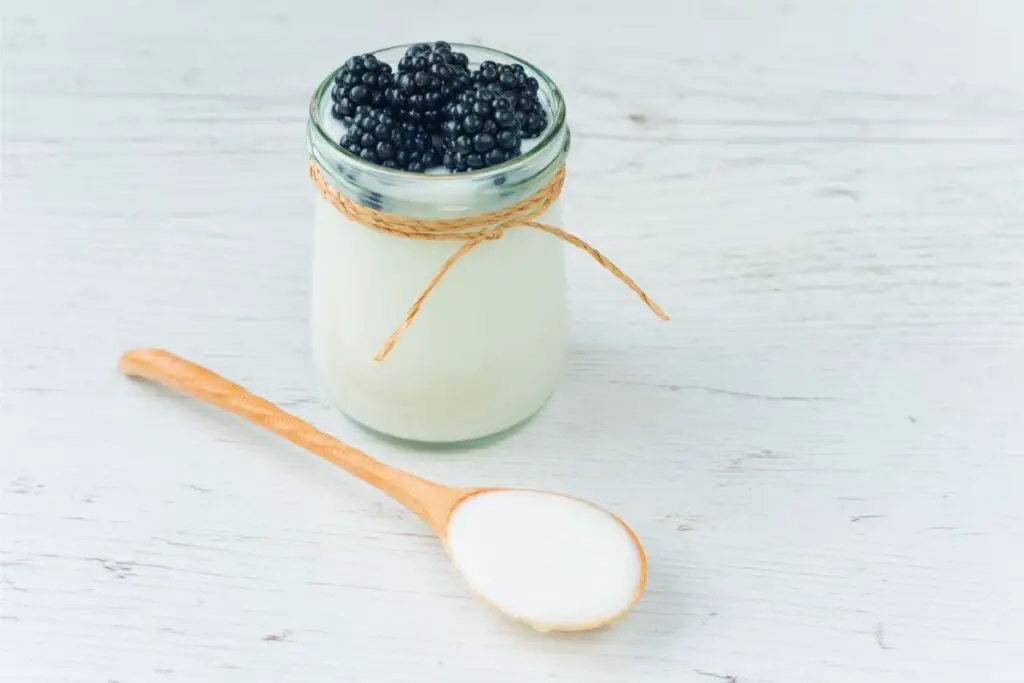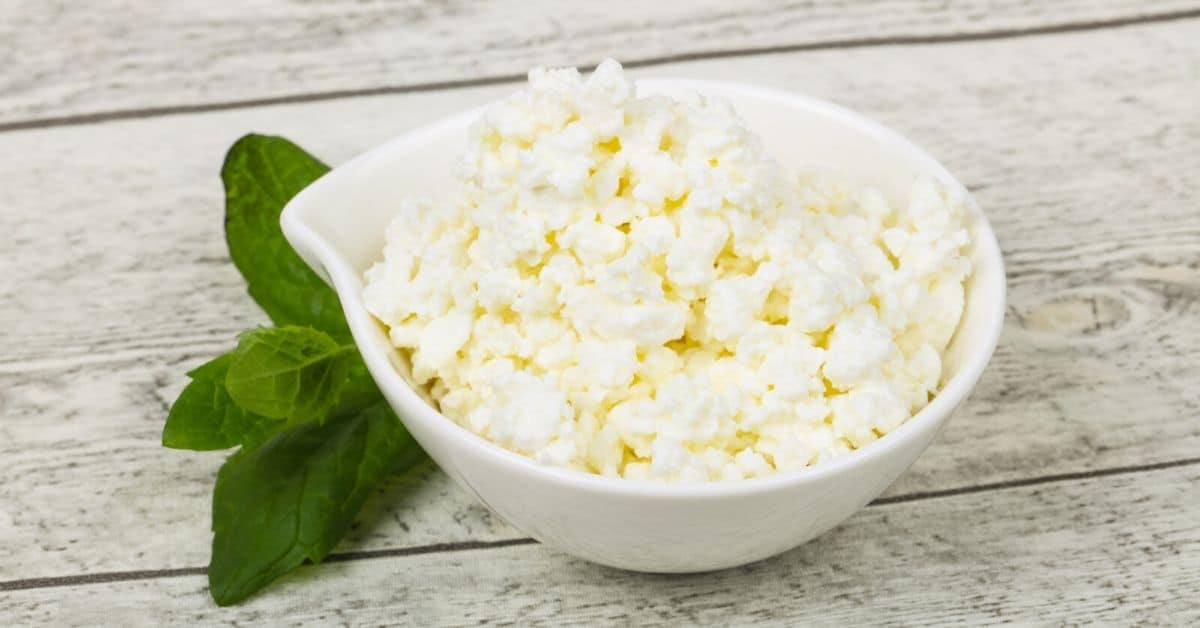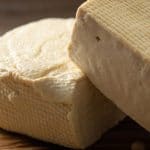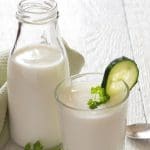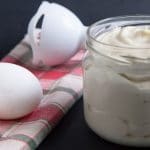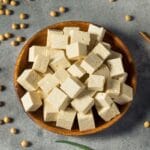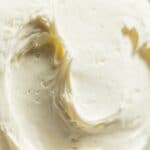Quick summary: Sour cream, buttermilk, cottage cheese, mayonnaise, heavy cream, or silken tofu can be great replacements for yogurt, depending on your recipe. A few other articles, already in your fridge, can also help you.
Although we generally associate yogurt with breakfast, it’s so much more than that. This incredibly versatile product is used in everything from baking and sweet desserts to meat marinades, dips, and salad dressings.
If your recipe calls for plain yogurt and you don’t have any in the fridge, there are other pantry staples you can easily use instead.
In this guide, we’ll help you choose the best yogurt alternatives according to what you are cooking or baking. If you have special dietary needs, are vegan, or have a dairy allergy, we’ll also give you some no-fuss dairy-free options.
Read more on yogurt shelf life and how long it can last after expiration.
Types of Yogurt
Yogurt is made during a process of bacterial fermentation of milk.
Due to its wide availability and fairly neutral flavor, cow milk is most commonly used. It can also be made from goat, sheep, and soy milk. With the increase in vegan and dairy-free diet trends, almond and coconut yogurt have become popular non-dairy options.
Store bought yogurt is available in full-cream, low-fat, and fat-free types. Full-fat versions are a lot thicker in consistency than fat-free types.
It can be plain/unsweetened or enjoyed in a host of sweetened flavors from vanilla and strawberry, to peach, blackberry, banana, passion fruit, toffee, and chocolate.
Yogurt in Baking and Cooking
Yogurt is used in cooking and baking for various purposes. In baked goods, the acidity in yogurt reacts with baking soda to work as a leavening agent.
The enzymes in yogurt also help to break down protein which makes it useful as a meat tenderizer in marinades. It also adds great luxurious creaminess and a slight tangy flavor without overpowering other ingredients.
If your recipe calls for yogurt, it is usually in a plain, unsweetened form. The neutral taste is suitable for use in sweet and savory recipes.
Greek Yogurt vs Plain Yogurt
Greek yogurt and the plain variety can be used interchangeably in baking and cooking recipes. The Greek type is known for its thick and creamy consistency. It has a more sour taste compared to the plain, unsweetened version.
Greek yogurt production involves the water component of the dairy being strained off. It also doesn’t contain any artificial ingredients. This results in a thicker product with a higher fat content than other types. It also has less sugar and carbs and is high in protein.
If your recipe calls for plain unsweetened yogurt, and you use the Greek version instead, you will most likely have to dilute it with a little water or milk to get a similar, thinner consistency.
We recommend using ¾ cup of Greek yogurt mixed well with four tablespoons of water to replace one cup of regular yogurt.
Tip: Add one tablespoon of water at a time. You might only need two or three tablespoons of water to get the right consistency.
Best Yogurt Substitutes
Mayonnaise
While mayonnaise is not an appetizing option to have with granola and fruit for breakfast, it makes a good yogurt replacement in baking.
Mayo is essentially a blend of egg yolks, vinegar, and oil. All of these are common ingredients in cakes or bread, so it’s not really such a strange concept to add mayo to a batter.
Most mayo is dairy-free, but not vegan. We do recommend you always check the ingredients list on the label as some brands may include flavorings or preservatives with trace amounts of dairy or wheat derivatives.
Mayo has a similar consistency but a tangier flavor. For the best results, stick with the full-fat version and avoid miracle whip. It is best suited for use in recipes like chocolate cakes and bread and can be substituted in equal quantities.
It is not suitable as a substitute in soups or very delicately flavored baked dishes.
If you need to check if the mayonnaise is expired, here are some signs to help determine if it is okay.
Sour Cream
Full-fat sour cream is a good substitute for yogurt since it has the same texture, consistency, and is also a soured dairy product.
The flavor is more on the sour side, but it will work equally well in batters and savory cooked dishes. It is ideal for substituting Greek yogurt.
Sour cream can be replaced in equal measures in batters, marinades, stews, soups, and sauces. When added to soups, stews, and sauces, add it towards the end of the cooking time.
Sour cream can endure a few days after expiration, but not too much. Here’s guidance on how long sour cream can last and how to tell if it is spoiled.
Crème Fraiche
This thick dairy cultured cream is high in fat and luxuriously creamy. It is slightly less sour, which makes it great as a topping and as an ingredient in sweet and savory dishes.
Crème fraîche is used in stews, soups, and sauces as a thickener and to add creaminess. It is also ideal in dips, spread on biscuits or scones, and whipped with sweetener for a dessert, pastry, or fruit topping.
Use crème fraiche in equal quantities. If you find your mixture too thick, add a few drops of water or milk at a time until you reach the desired consistency.
Buttermilk
Buttermilk is similar in flavor and color. It also contains an acid component that reacts with baking soda as a catalyst for the expansion and rising of dough or batter.
Even if you don’t have any buttermilk, you can easily make a homemade version with plain whole milk (more on that below).
Although buttermilk can be used in equal quantities, it does have a somewhat thinner consistency. To be on the safe side, start with slightly less than your recipe calls for, and then add the full amount if needed.
Buttermilk is ideal to use in marinades, baking cakes, quick breads, muffins, pancakes, and other batters.
If you often use small amounts for cooking, freezing buttermilk might be a good solution.
Homemade Buttermilk
To make your own sour milk, all you need is whole milk and an acid such as white vinegar, apple cider vinegar, or lemon juice.
Add one tablespoon of the acid to one cup of milk. Leave it for around 10 minutes. When it starts to thicken and curdle, it’s ready to add to your recipe.
Cottage Cheese
Cottage cheese is a healthy, high-protein alternative and is available in full-fat and low-fat varieties.
It is made from cow milk curds which gives it an unsuitable lumpy texture – but this can easily be fixed by blending it in a food processor.
Cottage cheese has a much higher salt content which makes it more suitable as a substitute in savory dishes. If you use it in sweet baked goods, cut out the addition of salt elsewhere.
Full-fat cottage cheese has a thicker consistency than yogurt, even when blended. When blending, add a little milk until you get a consistency that resembles yogurt. For an extra bit of tang, squeeze in a few drops of lemon juice.
Once blended, you can use it as a replacement in equal amounts. Cottage cheese is great for dips and salad dressings. It is not good in recipes that require cooking for long periods. If you are using it in a soup or stew, add it right at the end, just before serving.
Even though it will change its texture, you can still freeze cottage cheese for future baking.
Cream Cheese
Cream cheese is thick, smooth, high in fat, and ultra-creamy. Although smoother than cottage cheese, it also needs to be thinned out with a little milk to achieve the right consistency.
Blend it in a food processor adding a small amount of milk at a time until you have the right thickness. It lacks the tang of yogurt, so add a few drops of lemon juice if desired.
Your cream cheese blend can be used as a replacement in equal quantities and will make any stew, soup, dip, sauce, or casserole deliciously luxurious.
Cream cheese can last about a week after expiration or even a bit longer, but be sure to check it doesn’t have spoilage signs.
Heavy Cream
Heavy cream can be used to replace yogurt in different ways, although it does miss the tangy flavor notes. It can be whipped to use as a topping for fruit salad or added straight into baking batters.
If you want a thicker consistency and require the acidity as a catalyst for raising agents, add a tablespoon of vinegar or lemon juice and let the cream sit for 10 to 15 minutes. This is similar to making buttermilk. The acid will cause the cream to thicken, forming a type of soured cream.
The cream can also be used as a replacement when making soups, stews, curry, and sauces.
Depending on the consistency of your dish, use between ¾ to the full amount of the quantity called for in your recipe.
Freezing heavy cream is acceptable for extending its shelf life, but be careful to use it soon after thawing.
Coconut Milk
Coconut milk or coconut cream are usually available in a tin and can be used as a non dairy yogurt substitute in equal quantities.
Keep in mind that coconut cream is much thicker than coconut milk. You will most likely have to thin out the cream with a little liquid to get the right consistency. It has a luxurious texture and can be used in sweet and savory dishes.
Coconut milk and coconut cream both have a prominent coconut flavor that will be detectable in your dish. Make sure the taste profiles of all the ingredients pair well.
Unopened coconut milk has quite a long shelf life, especially packed in a can. After opening, you can count on a week at best.
Silken Tofu
Silken tofu is a good alternative for vegans and those with dairy allergies. Make sure you do not use medium, hard, or smoked tofu — it needs to be silken tofu specifically to provide you with the same soft, creamy texture and neutral flavor.
It is usually packaged in a block. Drain off the packaging liquid and blend the tofu in a food processor before adding it to your dish.
If you find the consistency slightly too stiff, add a small amount of plant-based milk such as soy or almond milk to thin it out.
It can be used as a substitute in soups, sauces, stews, dips, and curry. To make a whipped topping, mix in a little fine sugar or alternative sweetener when blending. Optionally you can also add a few drops of vanilla extract.
Since it is made from soy milk it is not suitable for people with soy allergies. Check for nutrition facts if you are still determining whether it’s suitable for you.
FAQ
Yes, plant-based yogurts will lend a similar texture and consistency, although they aren’t always available at smaller grocery stores. They don’t all have the same taste, so make sure to choose something with a neutral flavor that won’t influence the taste of your final dish.
Although even marinating meat for 20 minutes will make a difference, it is ideal to leave your meat in the marinade, covered, and refrigerated for 2 to 4 hours.
If it is just a day or two past the expiry date and just slightly sour, you can use it in baking recipes. If the yogurt is well past the expiry or there are signs of mold, it should be thrown away.
Conclusion
Although we often associate yogurt with breakfast, it is a very versatile product for sweet and savory cooking. If your recipe calls for yogurt and you don’t have any, you can easily make DIY buttermilk as a quick-fix alternative. You won’t even notice the difference.
If you need a dairy-free alternative, tofu, coconut milk, or vegan yogurt options are all suitable. Keep in mind that dairy alternatives such as cottage cheese and Greek yogurt should be added to stews, soups, and curries towards the end of the cooking time to prevent splitting or curdling.
Happy cooking, baking, and (most of all) eating!
*image by ksyutoken/depositphotos
